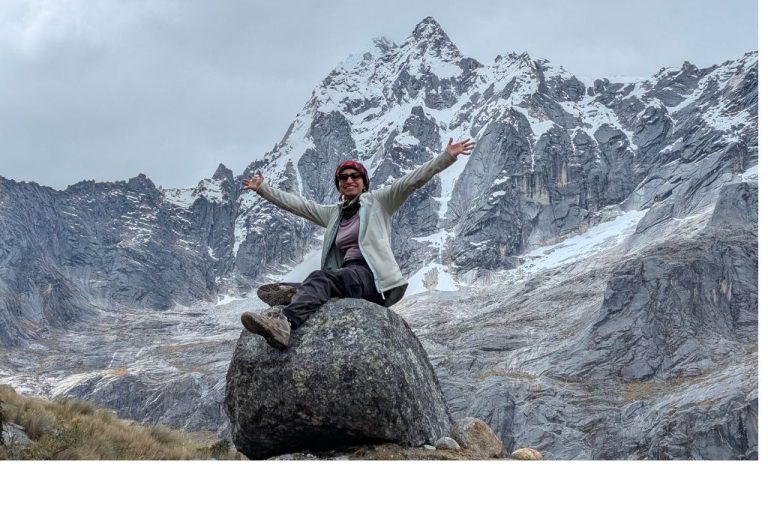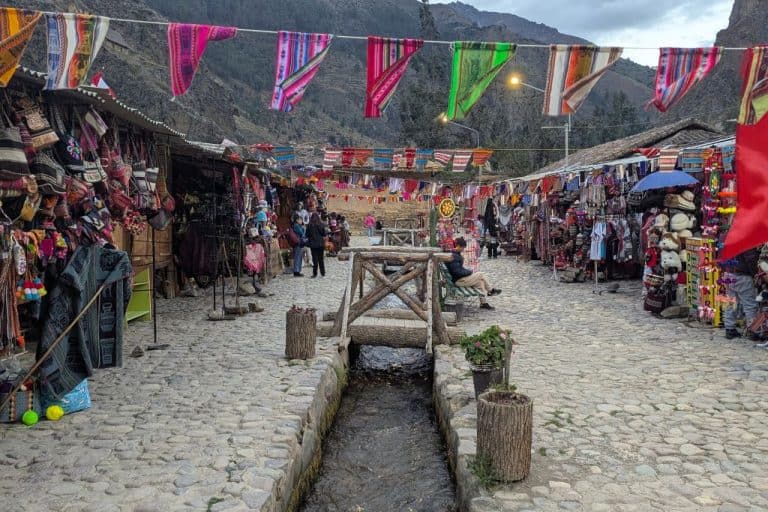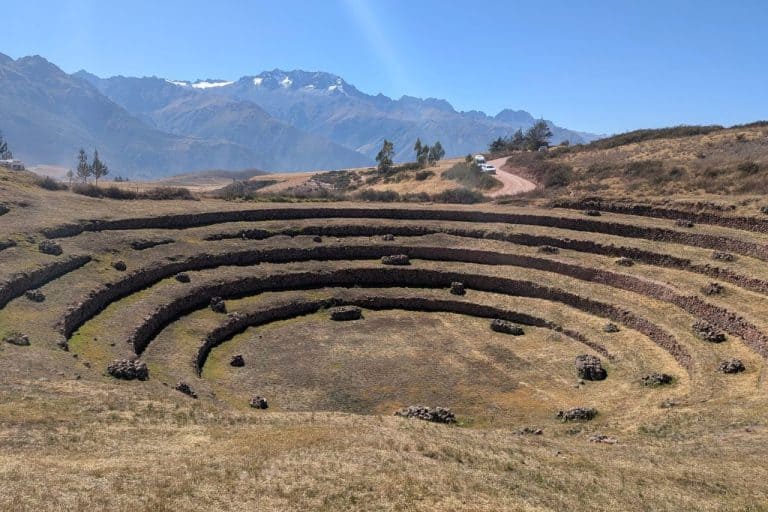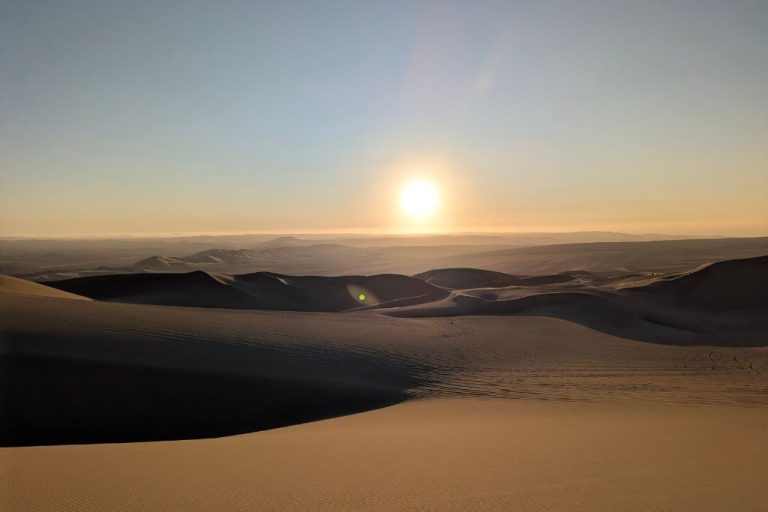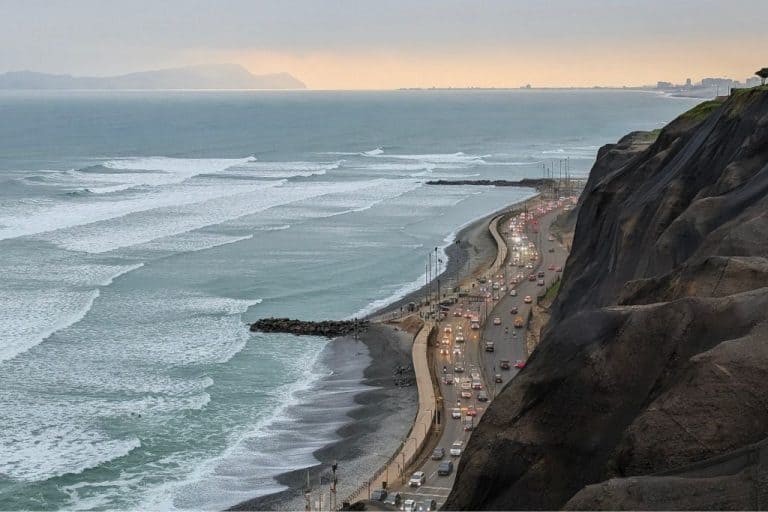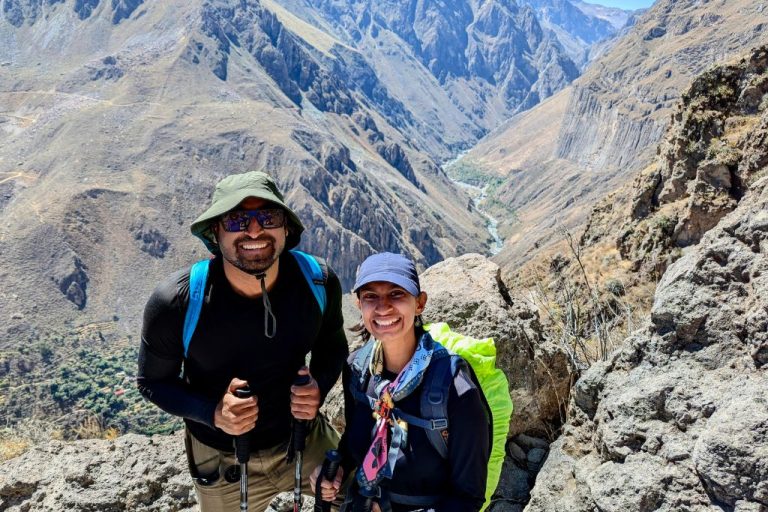Inti Raymi Festival in Cusco – A Complete Guide To Enjoy The Majestic Sun Festival
There’s something magical about Cusco in June. If you’re planning a trip to Cusco in June, experiencing the Inti Raymi Festival is an absolute must. This ancient Inca celebration of the Sun transforms the city into a vibrant hub of color, music, and dance. In this guide, we’ll share what to expect, where to watch the ceremonies, the difference between free and paid events, and tips from our personal experience so you can make the most of this unforgettable festival.
We were lucky to be in Cusco during this incredible week-long celebration. From the moment we arrived, the city was buzzing with processions, traditional dances, and parades that filled the streets with color and life. It’s not just a festival you watch – it’s one you feel. The pride, the history, the devotion – it all comes together in a grand spectacle that celebrates the heritage of the Inca civilization.
If you’re planning to experience Inti Raymi yourself, here’s everything you need to know – from the festival’s fascinating history to what to expect on the big day, plus a few honest tips from our own experience.
The History and Significance of Inti Raymi
Inti Raymi means “Festival of the Sun” in Quechua, and it dates back to the time of the Incas. It was the most important ceremony in the Incan Empire, held in honor of Inti, the Sun God – the most revered deity of the Inca religion.
For the Incas, the sun wasn’t just a celestial body. It was the source of life, light, and abundance. The emperor, known as the Sapa Inca, was believed to be the “Son of the Sun,” and this festival was a way to thank Inti for a successful harvest and to ask for blessings for the coming year.
Historically, the festival took place during the winter solstice – around June 21st – marking the shortest day of the year in the Southern Hemisphere. The Incas believed this was when the sun was farthest from Earth, and they performed rituals to call it back and ensure the return of warmth and fertility to their lands.
Thousands of people gathered in Cusco for the ceremony, dressed in vibrant costumes, bringing offerings of food, coca leaves, and chicha (a traditional corn beer). Llamas were sacrificed (symbolically today), and priests performed elaborate rituals to honor the sun.
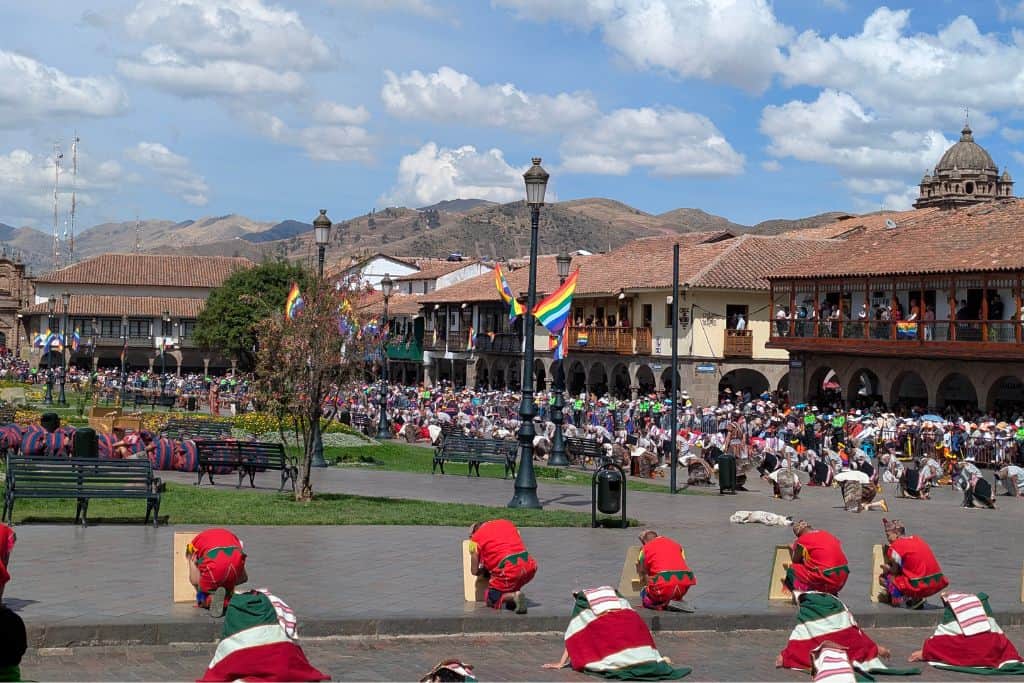
The original Inti Raymi was banned by Spanish colonizers in the 16th century as part of their effort to suppress indigenous culture and religion. But in 1944, the festival was revived as a cultural performance – not as a religious ceremony, but as a way to celebrate and preserve Peru’s Incan heritage. Today, it’s one of the biggest festivals in South America, attracting thousands of visitors from around the world.
The Festival Day – Three Main Events
The main celebration of Inti Raymi happens on June 24th every year, and it unfolds across three major locations in Cusco. The day begins early and lasts into the afternoon, following a sequence of ceremonies that represent the Inca’s journey of worship and celebration.
1. Qorikancha (Temple of the Sun)
The day begins at Qorikancha, the ancient Temple of the Sun – once the most sacred site in the entire Inca Empire. This is where the Inca priests and nobles would gather to pay tribute to Inti at sunrise.
Today, this is the first event of the day, and it’s free to watch from the surrounding streets. However, if you would like a guaranteed seat, there is an option to purchase the ticket too.
We arrived at Qorikancha early – around 7:00 a.m. – and it was already packed. The performers, dressed in stunning traditional attire, filled the gardens and steps of the temple ruins. The Sapa Inca (played by an actor) and his Coya (queen) appeared in full regalia, surrounded by musicians, dancers, and priests.
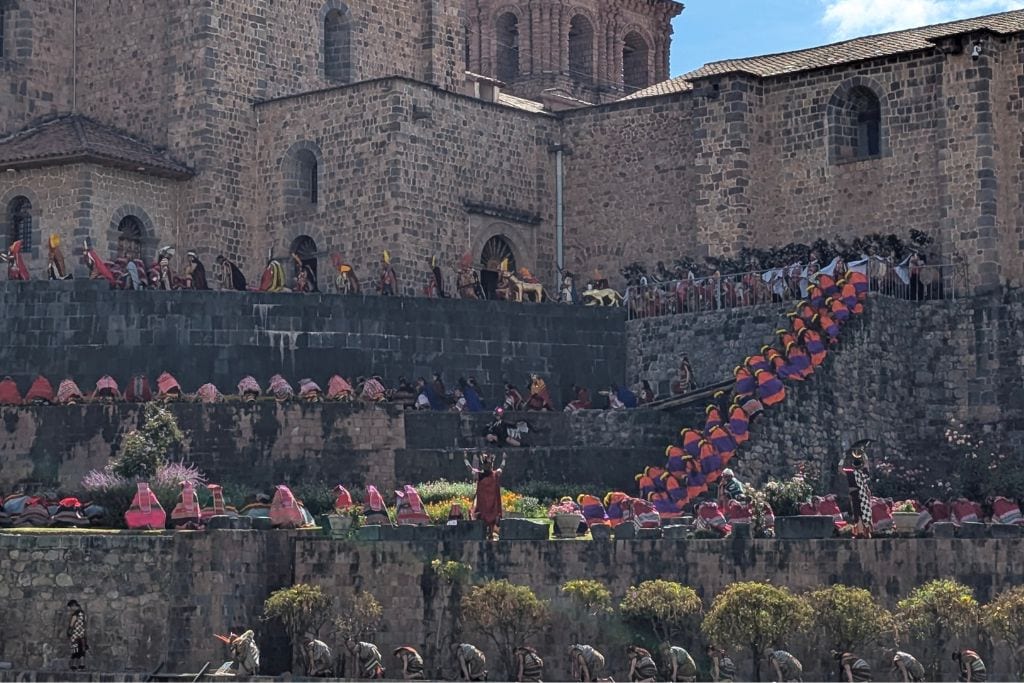
The ceremony began with prayers and offerings to the sun, accompanied by music, conch shells, and rhythmic chanting. The moment when the Inca raised his hands toward the sun was truly breathtaking – the crowd went completely silent, as if everyone collectively felt the presence of something ancient and powerful.
If you want a good view here, come early and claim a spot along Avenida El Sol near the temple walls. Locals start lining up hours before, and you’ll see people selling foldable chairs, umbrellas, hats, drinks, and snacks – basically, anything you might need or might have forgotten.
2. Plaza de Armas (Main Square)
After the first ceremony, the procession moves toward Plaza de Armas, Cusco’s main square. This is the second major event, and it’s also free to watch. It lasts between 45 min to 1 hour.
We followed the crowd as the performers paraded through the streets – hundreds of dancers in colorful outfits representing different Inca communities. The music of flutes and drums echoed between the colonial balconies.
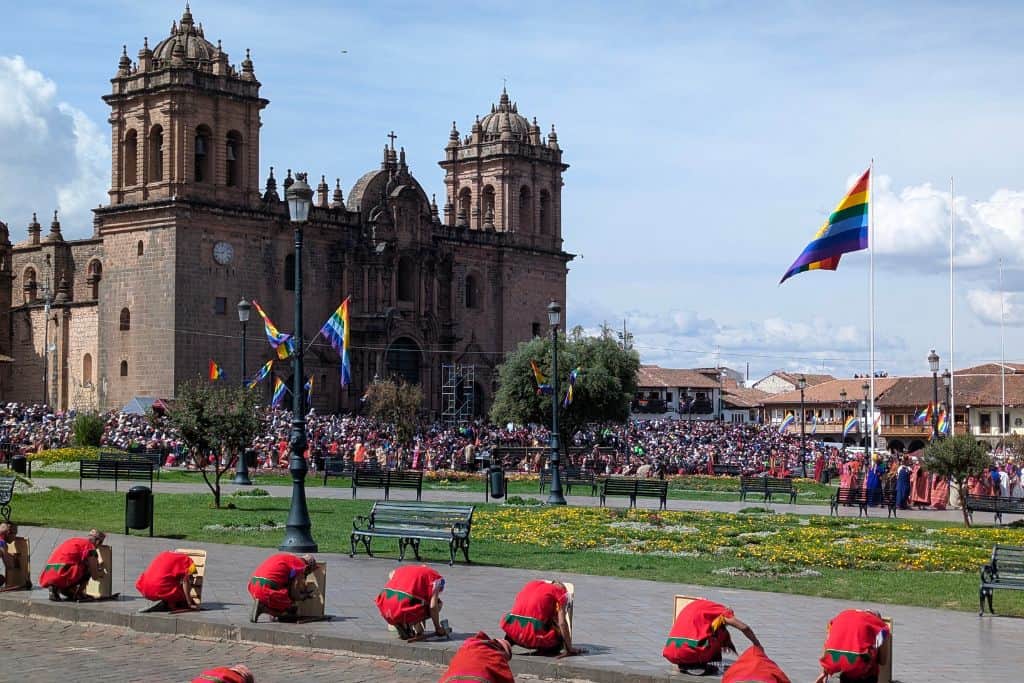
By the time we reached Plaza de Armas, it was packed beyond imagination. Thousands of people – locals and tourists alike – filled every corner of the square. We managed to squeeze through the crowd to find a small space near one of the stone arches.
The Inca and his entourage arrived in a grand procession, and a short reenactment took place in the center of the plaza. The energy was incredible – but so was the crowd. There was a lot of pushing, especially when people were trying to get a glimpse or snap photos.
If you’re planning to watch from Plaza de Armas, be prepared for a very crowded experience. You’ll be standing for quite a while, and personal space is almost nonexistent. Keep your valuables close – a crossbody bag or money belt is ideal.
And again, anything you forget – hats, sunscreen, water – you can buy on the spot. Vendors line every corner, and they’re part of the experience. It’s chaotic but in a lively, festive way that somehow just works.
3. Sacsayhuamán (The Main Ceremony)
The final and grandest part of the festival takes place at Sacsayhuamán, the ancient Inca fortress overlooking Cusco. This is the main event, featuring a full reenactment of the original Inti Raymi ceremony with elaborate rituals, dances, and symbolic offerings.
Unlike the first two ceremonies, this part is ticketed. You can buy tickets through official channels or tour operators, and prices vary depending on seating – from general viewing areas to VIP seats closer to the performance. The prices can range from $165 USD to $250 USD.
We didn’t attend this part ourselves, but everyone we spoke to who did said it was absolutely worth it for the experience. The setting is spectacular – those massive Inca stone walls, the sweeping view of the Andes, and the hundreds of performers recreating a ceremony that dates back centuries.
If you’re planning to go, book tickets early, as they sell out weeks in advance. You can also hike up to the nearby hills for free panoramic views, though you’ll be watching from afar. Bring sun protection, water, and snacks – it’s a long day under the open sky.
Our Experience
We decided to experience the first two free events – at Qorikancha and Plaza de Armas – and honestly, it was more than enough to soak in the atmosphere.
That morning, we woke up before sunrise and made our way toward Qorikancha. We took the bus to arrive there at 7:00 a.m. The streets were already lined with locals, families, and travelers from all over the world. You could feel the excitement building as the performers started arriving – their costumes shimmering with gold, feathers, and bright colors.
When the ceremony began, everyone fell silent. The Inca’s voice echoed through the speakers as he invoked the Sun God. It was both theatrical and deeply spiritual. The smell of incense, the sound of flutes, and the golden morning light on the temple walls – it felt like a moment frozen in time.
After the ceremony, the entire city seemed to move together toward Plaza de Armas. The parade was a beautiful chaos – dancers spinning, bands playing, kids waving flags. It felt like every street corner had something happening.
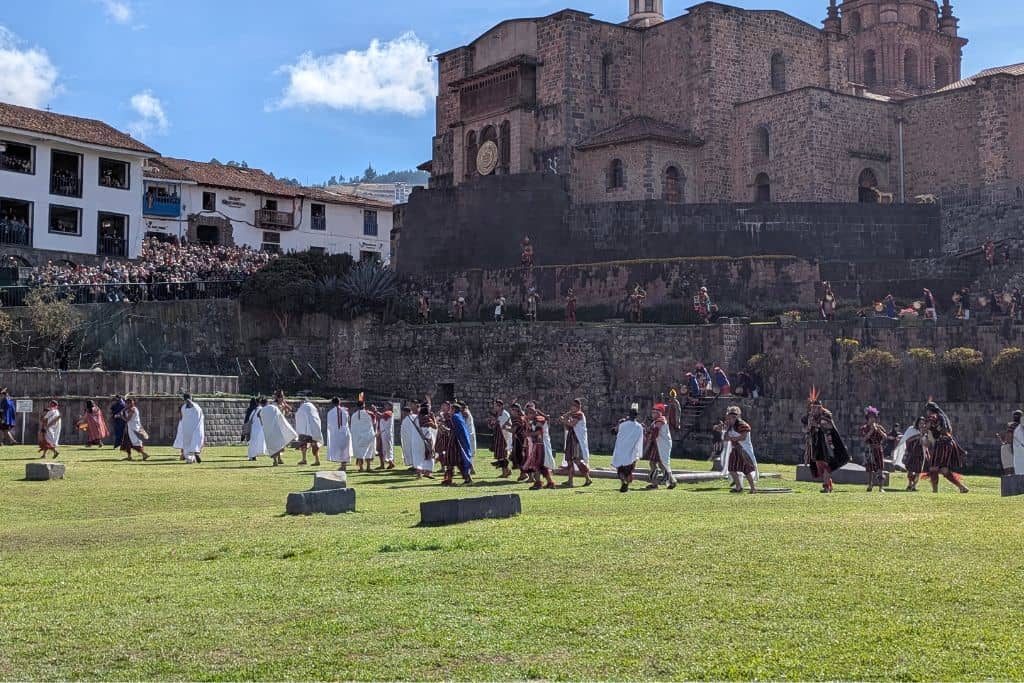
At the Plaza, things got intense. The crowd was enormous, and getting a spot with a decent view required a bit of determination (and a lot of patience). We found ourselves sandwiched between a group of local families and a few tourists who had arrived even earlier than us. The atmosphere was electric – laughter, cheers, and music. Everyone trying to find a spot to stand, some even stood on their little stools to have a good view.
When the Sapa Inca appeared, everyone craned their necks or held up phones to capture the moment. We couldn’t see everything perfectly, but the sound, the costumes, and the collective energy made up for it.
By the end, we were sweaty, sunburnt, and completely exhilarated. We treated ourselves to a fresh juice and some empanadas afterward – the perfect end to an unforgettable day.
But the celebrations didn’t stop there.
That evening, we went back to the Plaza, curious to see what was happening after sunset. To our surprise, the energy was still high – maybe even higher. The square was lit up and alive with music, singing, and dancing. You could feel that the performers were giving their all, feeling every beat of the drums and melodies of traditional songs. There was so much happiness in the air – people from around Cusco and across Peru had all come together to celebrate this moment of joy. It felt like the perfect closing to a week of cultural pride and connection.
Safety Tips And Final Thoughts On The Inti Raymi Festival
While Inti Raymi is an incredible cultural experience, it’s also very crowded, so it’s important to stay alert and plan ahead.
Here are a few practical tips from our experience:
- Arrive early. If you want a decent view at Qorikancha or Plaza de Armas, get there at least an hour (ideally two) before the event begins.
- Keep your valuables secure. Pickpocketing can happen in large crowds. Use a crossbody bag that zips or wear a money belt under your clothes.
- Bring essentials. Sunscreen, water, hat, sunglasses, and maybe even a light jacket – the weather in Cusco can change quickly.
- Expect crowds and chaos. It’s part of the charm. Go with the flow, smile, and enjoy the shared excitement.
- Stay hydrated and eat. You’ll be on your feet for hours, so pack snacks or buy from street vendors.
- Book Sacsayhuamán tickets early if you want to see the full reenactment.
Even if you only attend the free parts like we did, Inti Raymi is worth every moment. There’s nothing like standing among thousands of people, watching ancient traditions come alive against the backdrop of Cusco’s colonial streets and Inca temples.
The festival isn’t just a performance – it’s a proud reminder that the spirit of the Incas still lives on in Peru. And for those few hours, under the winter sun, you feel it too.
Read More About Peru
READY TO TRAVEL LIKE A LOCAL?
Book a free 30-minute consulting call with us and let’s start planning your next unforgettable adventure!

